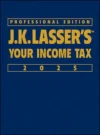Sole Proprietors: Claim These Five Business Deductions on Your Personal Return
While most expenditures you incur in business are tax deductible, self-employed individuals are forced to take some business-related write-offs as personal deductions rather than as business deductions. The impact: These expenditures don’t reduce your self-employment income, which is subject to self-employment tax (Social Security and Medicare taxes for self-employed people). They do effectively reduce the tax you pay on your profits, so don’t overlook these business deductions merely because you can’t find space for them on Schedule C. These deductions can be found in the section of Form 1040 marked Adjusted Gross Income.
1. Health savings account deduction
If you are covered by a high-deductible health plan, you can contribute to a special savings plan, called a health savings account (HSA), for medical purposes. (A high-deductible health plan is an insurance policy with a minimum insurance deductible in 2008 of $1,100 for self-only coverage or $2,200 for family coverage.) Deductible contributions for 2008 are limited to $2,900 for self-only coverage or $5,800 for family coverage. Those who were at least 55 years old by the end of 2008 can add another $900.
You have until April 15, 2009, to make 2008 contributions (you cannot extend this date even though you obtain an extension of time to file your return). The deduction for HSA contributions is figured on Form 8889.
2. One-half of self-employment tax
Self-employment tax is the employee and employer share of Social Security and Medicare taxes on net earnings from self-employment. If you have net earnings from self-employment and owe self-employment tax, you can deduct one-half (presenting the employer share even though you are not technically an employer). Self-employment tax (and the one-half deduction) is figured on Schedule SE.
3. SEPs, SIMPLEs, and qualified plans
If you have a profit-sharing, 401(k), simplified employee pension (SEP), savings incentive match plan for employees (SIMPLE), or other qualified retirement plan, you deduct contributions on your behalf on your personal return. Contributions on behalf of employees are reported on Schedule C.
You can make contributions for 2008 up to the extended due date of your return (October 15, 2009). However, a SIMPLE plan must have been set up by October 1, 2008; profit-sharing and other qualified plans must have been set up by December 31, 2008. You can, however, set up and fund an SEP through October 15, 2009, if you obtain a filing extension. The maximum deductible contribution for an SEP for 2008 is $46,000.
4. Self-employed health insurance deduction
If you carry health insurance and do not have coverage through a spouse’s employer, you can deduct 100% of the premiums in the Adjusted Gross Income section, rather than as an itemized medical deduction. (Deductions for health insurance for employees are deductible on Schedule C.) The deduction for your premiums cannot exceed net earnings from the business under which the premiums are paid.
5. Domestic production activities deduction
If your business produces certain things domestically, you may be able to deduct 6% of income from these qualified activities. For example, if you perform engineering or architectural services related to construction performed in the United States, you may qualify. The deduction does not require any expenditure; you receive it merely because of the type of work you do. The deduction is figured on Form 8903.
Separate return
Return filed by a married person who does not file a joint return. Filing separately may save taxes where each spouse has separate deductions, but certain tax benefits require a joint return.



